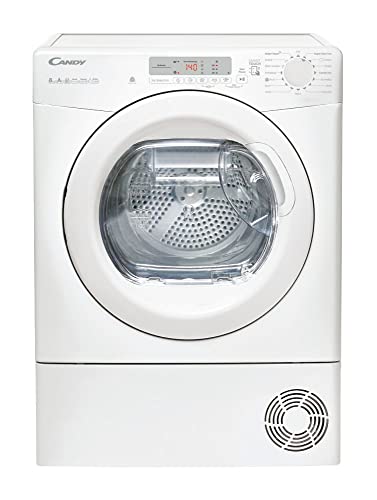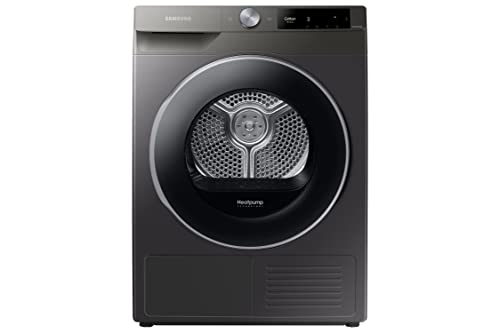10 Facts About Heatpump Dryer That Will Instantly Make You Feel Good M…
페이지 정보
작성자Betty Pelensky 댓글댓글 0건 조회조회 14회 작성일 24-04-29 00:14본문
 What is a Heatpump Dryer?
What is a Heatpump Dryer?The heatpump dryer is an energy-efficient alternative to fossil fuel powered clothes tumble dryers heat pump vs condenser. They utilize air from outside instead of exhausting the inside. It's more than just energy.
The compressor pressurizes a refrigerant in one set of coils, and pump it through another set of coils that evaporate. The air is heated which is then used to dry the clothes.
Energy Efficiency
The heatpump dryers utilize an air compressor and Evaporator together to eliminate the moisture from your clothes. This technology is perfect for people who are looking to cut down on their energy usage however don't have enough space to hang their clothes on a line. This is because heatpump dryers are ventless which means that they don't require a ventilation pipe. Instead, the air they use is taken in from the outside and then pumped through filters before being pumped out. This closed loop system saves energy since it doesn't exhaust indoor air that has already been heated or cooled prior to entering the home (as traditional dryers do).
This is a great alternative for those looking to minimize their exposure to environmental pollutants like dust, pollen and mold. When the air that is pumped in passes through a filter and is filtered, the majority of UFPs (Ultrafine Particles) are pulled into the condensed water and released as water in the form of vapor. This keeps them from being scattered into the air and causing respiratory problems like they would be in a normal vented dryer (Sokhansanj 1984).
The energy efficiency of a heater is the most significant benefit. It can help save up to 50 percent of the energy required to dry when compared with the standard dryer. It could also save up to 30 percent of the energy used for a gas-powered dryer, and more than 40 percent of the electricity required for a dryer powered by electricity. In addition, it could save up to 10% of the energy required for cooling, compared to a regular dryer.
In the past the majority of research into the use of heat pumps for drying was focused on the heat pump. In recent years, the focus has shifted to the overall performance. The performance can be measured using COP (coefficient of performance), SMER (specific moisture extraction rate, i.e. This performance can be measured in terms of the COP (coefficient of performance), SMER (specific moisture extraction rate, i.e. 2001).
Heating pump assisted drying is cost-effective and heatpump dryer can provide a better product than hot air drying. A study conducted by Soponronnarit and Prasertsan found that tomato slices dried with a heat-pump dryer had a more vibrant color and aroma in comparison to slices dried with hot air dryers.
Moisture Removal
A heat pump dryer features an evaporator heatpump dryer that absorbs the water vapor from the fabric as it moves through it. The moisture is then removed from the evaporator and discarded into a drain pan, or it is taken directly from the dryer into a sink or drain pipe. Heat pumps have a huge advantage over resistance dryers that rely on a heating component to generate heat. Heat pump dryers don't create additional humidity in your house and can reduce your expenses and time by reducing drying time.
Like traditional dryers, heat pump models make use of a compressor to generate heat by compressing the fluid. As the fluid is pressed and heated, it absorbs the heat from the air and then transfers this heat to the fabric. The dryers that use heat pumps are more efficient in energy use than standard dryers and can cut your utility bills by as much as 30%.
Heat-pump drying systems are also smaller and require less maintenance than traditional dryers. They have fewer parts, and they do not contain any resistance heaters, which are the source of energy waste in most conventional dryers. However, they do have lint screens that require to be cleaned frequently and may require periodic cleaning of the condenser coils, which are responsible for the transfer of heat from the evaporator.
The performance of a Heat Pump Dryer can be evaluated by measuring the specific humidity extraction rate (SMER) which is the dryer capacity. And the energy efficiency of the Heat Pump Dryer is determined by its COP, or coefficient of performance. This is the ratio of the heat that is absorbed by the condenser and that work performed by a compressor. In this study a heat-pump dryer (HPD) was evaluated experimentally by using different designs and testing loads (4 kg and 7 kg). The HPD was equipped a desiccant-wheel Adsorption system in the dryer's inlet.
The drying processes of the four designs of the HPD were studied by taking measurements of the SMER at a constant volumetric flow rate of 100 milliliters per hour. It was observed that the drying process reaches an equilibrium state for all three designs. Moreover, it was shown that the performance of the HPD improved when the adsorption device was located at the outlet of the dryer rather than at the outlet.
Fabric Care
They are designed to dry fabrics at lower temperatures, which protects them from heat damage and extend their lifespan. They also prevent shrinkage. They also offer a gentler fabric care experience than vented dryers, which makes them a great option for delicate or natural fabrics, such as wool and cotton.
A proper maintenance and use can increase the efficiency of heat pump dryers as well as their fabric care capabilities. Cleaning the lint filter and condenser units and emptying the water tanks, and clearing out the air intake vent frequently will ensure that your dryer operates at its highest efficiency.
Cleaning the lint filter in your dryer's heat pump regularly will stop the build-up of lint that could cause the appliance to overheat and cause it to perform less efficiently. It is essential to remove the lint screen at the end of each drying cycle and clean it thoroughly with warm water. After that, let it dry completely before reinstalling it into the dryer.
Emptying your heat pump dryer's water container will keep excessive water from flooding and damaging the appliance. This can be done by draining the water from the container by using an hose or sink. Then rinse it off and let the container dry completely before installing it in your dryer.
To maintain optimal fabric care it is important to select the appropriate temperature setting for each load of laundry. To avoid damage to synthetic clothing and sportswear the lower temperatures are necessary to dry. Upholstery and cotton fabrics can tolerate higher temperatures. Bosch heat pump drying systems offer a variety of drying programs to accommodate different materials and washing conditions.
A heat pump dryer that has a PerfectDry feature will automatically adjust the duration and temperature of each drying cycle to the proper level. This reduces guesswork and saves your time. The 40' Express Cycle, for instance, can dry an unimportant load of 2 pounds of laundry in less than two hours.
A heat pump dryer is likely to be the ideal choice for you if you are looking for a sustainable efficient laundry solution or if you simply want to upgrade your laundry room. Browse through Aztec's top-rated brands and find a heat pump dryer that meets your needs.
Longevity
The heat pump dryers are fairly new to the market in the United States. They've been in use for a while in Europe and other countries. The heat pump dryer is one of two kinds of ventless dryers. The other is the condenser dryer. Both have advantages and drawbacks, however heat pump dryers are becoming increasingly popular.
The heat pump dryers recycle the energy they use to dry the laundry. This means that heat-pump dryers consume much less electricity than standard tumble dryers heat pump, and last for longer.
In addition to being more eco-friendly, heat-pump dryers are less harsh on clothes. Since they don't add the heat needed to dry they can help safeguard high-quality fibers. This makes them ideal for delicate fabrics like cashmere and wool. Another advantage of a heat-pump dryer is that it doesn't cause as many wrinkles as a conventional dryer, and it can reduce the amount of time you're spending ironing your clothes.
A heat-pump drying system does not completely eliminate the need for regular maintenance. Like all dryers, it is necessary to clean the lint screen and bottom container regularly. It is also important to ensure that the dryer is level to ensure that it doesn't strain its motor. Regular maintenance can extend the life of the dryer's heat pump.
The long-lasting capabilities of a heat pump dryer is another advantage over traditional vented dryers. Traditional vented dryers require vent pipes to be run outside your home. This pipe is essential to remove excessive heat and moisture however, it could become blocked by debris over time. The life expectancy of a traditional dryer could be significantly extended by maintaining it regularly that is simpler than removing an entire wall on the exterior of your home.
 The drying systems that use heat are more tolerant to humidity than vented models and can operate at lower temperatures, which is ideal for those with sensitive or allergic skin. Some heat-pump dryers can even operate on a 120-volt, 15-amp electrical circuit; this is crucial for those who live in homes that have limited wiring.
The drying systems that use heat are more tolerant to humidity than vented models and can operate at lower temperatures, which is ideal for those with sensitive or allergic skin. Some heat-pump dryers can even operate on a 120-volt, 15-amp electrical circuit; this is crucial for those who live in homes that have limited wiring.댓글목록
등록된 댓글이 없습니다.
